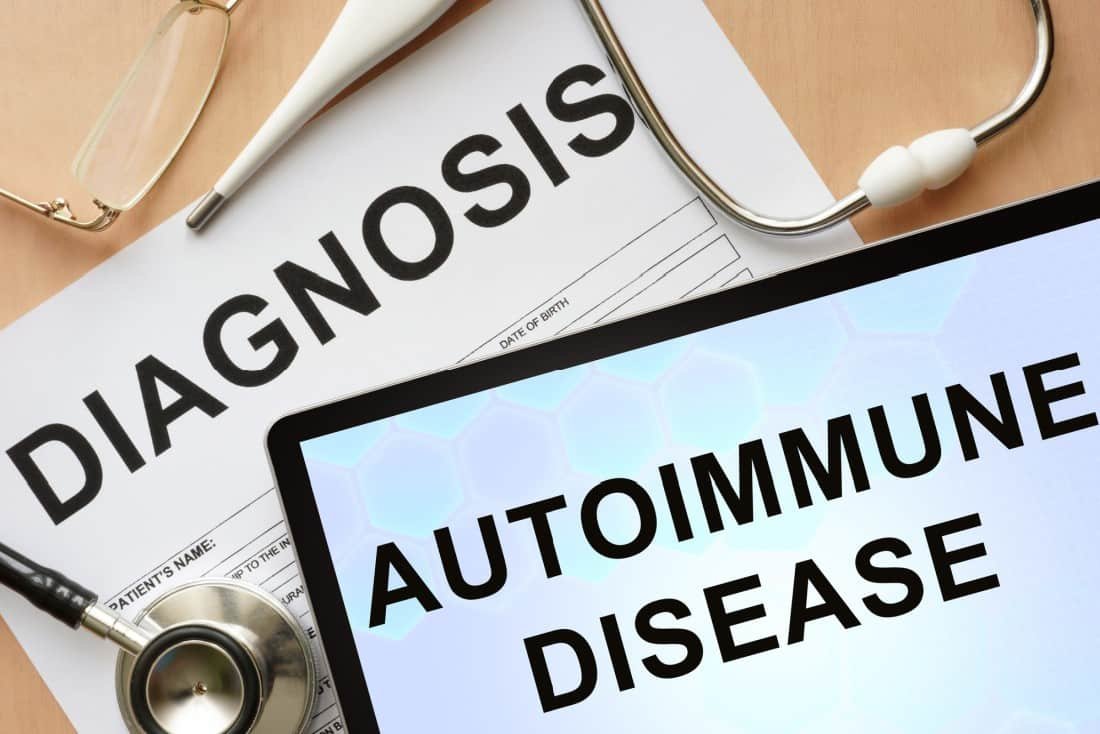What is Sjogren’s Syndrome, and How Do You Get Diagnosed
Sjogren’s syndrome is a chronic autoimmune disease that causes dryness in the mouth and eyes. It can also lead to joint pain, fatigue, and other complications. If you think you might have Sjogren’s syndrome, your doctor will likely do a few different tests to confirm the diagnosis.

Learn more about what Sjogren’s syndrome is and how you can get diagnosed in this blog post.
Ever had dry eyes? Dry mouth? Ever heard about Sjogren’s Syndrome?
This disease affects an estimated 2.3 million individuals worldwide as of 2018. It is expected that by 2027, this number will rise to 2.5 million.
This unpopularity caused many misconceptions about the disease.
This article will discuss Sjogren’s syndrome, how you get diagnosed and treated, and read on.
Subscribe to My Email! Self-care is so important, but it can be hard to know where to start. That’s why I created a self-care journal, to help you make small, everyday changes that will have a big impact on your life. And when you subscribe to my email list, you’ll get the journal for free! Plus, you’ll receive great emails packed with wonderful information and free printables. You won’t want to miss out on this valuable content. Click this button and sign up now!
What is Sjogren’s syndrome?
When your immune system goes crazy and attacks healthy cells instead of invading germs or viruses, you have Sjogren’s syndrome, an autoimmune disorder.
The glands responsible for producing moisture are attacked by your white blood cells, generally accountable for keeping pathogens at bay.
When this occurs, your eyes, mouth, and other body parts begin to dry up because you cannot produce tears or saliva. There are, however, medicines that can help.
When you find you have a chronic illness that needs ongoing medical attention, it is customary to be concerned.
Remember that most persons with Sjogren’s disease are healthy and do not have any significant issues.
It would be beneficial if your favorite pastimes did not need to change.

The Factors and Risk Factors
They do not know for sure what is causing it. Your health might jeopardize your health if you carry specific genes.
Getting infected with a virus or bacteria might bring off the sickness.
Sjogren’s disease can be caused by an infection, for example, if you have a faulty gene. As a result, your body’s defenses go into high gear.
The body’s white blood cells often take the lead in the fight against disease-causing bacteria.
A faulty gene causes white blood cells to target healthy cells in saliva and tear ducts. If you don’t seek treatment, your symptoms will continue to worsen.
Sjogren’s can be caused by several additional factors, including:
- Age. Sjogren’s often affects persons over the age of 40; however, it can also afflict younger adults and children.
- Gender. Sjogren’s disease affects ten times more women than males.
- A variety of autoimmune diseases. People living with Sjogren’s are more likely to develop a second autoimmune disorder, such as lupus or rheumatoid arthritis.
Complications
Sjogren’s syndrome is most commonly associated with eye and oral problems.
Cavities in the mouth.
You’re more likely to have cavities if your mouth is dry because saliva helps protect your teeth from the microorganisms that cause cavities.
Infections by fungi.
Thrush in the mouth is far more prevalent in patients with Sjogren’s syndrome than in the rest of the population.
Problems with vision.
Damage to the cornea can occur as a result of dry eyes.
In rare cases, problems such as:
- The lungs, kidneys, or liver are all possibilities. It can cause pneumonia, bronchitis, or other lung issues; it can cause renal difficulties and induce cirrhosis in the liver.
- Nodes of the lymphatic system. Sjogren’s syndrome is associated with a modest number of cases of lymph node cancer (lymphoma).
- Nerves. Your hands and feet may become numb, tingly, or even burning (peripheral neuropathy).

How do you get diagnosed?
A blood test is the only method to determine if you have Sjögren’s syndrome.
A thorough examination of all of your symptoms is necessary to rule out any other possible explanations for your symptoms.
Specialists such as an ophthalmologist or dentist may look in for signs of the disease.
This includes diseases like inadequate tear film on your eyes, poor saliva production, salivary gland inflammation, and an underlying inflammatory condition.
Sjögren’s syndrome can only be diagnosed by a combination of tests on your eyes and mouth, blood and urine tests, and biopsies, which your doctors will do.
A medical history and physical exam will also be conducted as part of this process, influencing the tests your doctor’s order.
To better understand the severity of the condition and its impact on other regions of your body, they will do further tests after establishing that you have Sjögren’s syndrome.
Specific antibodies (blood proteins) must be present in your blood to be diagnosed with Sjögren’s syndrome. To rule out Sjögren’s syndrome, doctors will look for an inflammatory pattern on the salivary glands in your lips.
Depending on your doctor’s recommendation, he may perform the following test.
For the doctor to determine if the patient has Sjögren’s syndrome, blood and urine will be tested for antibodies.
An ANA (antinuclear antibody) test is required to detect whether or not you have an autoimmune illness.
- Using Schirmer’s test, you may determine whether or not your tear glands are generating enough tears to keep your eyes wet all day.
- You can use ocular surface staining to inspect the eye’s surface for damage and dryness.
- Salivary gland function scans look at the glands that produce saliva in your neck, between your ears, and beneath your jaw.
- A biopsy of your upper lip can detect inflammation of the glands that generate saliva and tears. It is easy to reach the salivary glands directly beneath the inner lip surface with a lip biopsy.
- Sialometry is a technique for measuring salivary flow.
- The main salivary glands are seen through ultrasonography to look for structural alterations that might assist in diagnosis.

Treatment
It’s up to you and your doctors to develop a treatment plan for Sjögren’s syndrome that works for you. A lot will depend on the amount and severity of your symptoms.
In many circumstances, over-the-counter drugs can alleviate symptoms of the condition. They may need to take medicine or have minor surgery in some instances.
However, the symptoms can vary widely from mild (such as dryness of the eyes and mouth) to more severe (such as memory loss, weariness, and stiffness of the joints).
Want to make PASSIVE INCOME? I do and LOVE IT! If you want to know how you make money selling digital products on ETSY, take this COURSE. If you want to know how to write faster and make money as a freelancer, take this COURSE. If you want to learn both plus Affiliate Marketing, Own a PLR Store, and much more, join PIPS-Passive Income Pathways Membership. You will get all the courses FOR FREE.
Blood vessels and internal organs, including the lungs and kidneys, might also be affected in some instances.
Sjögren’s condition is now incurable. As part of their ongoing research, scientists look for improved techniques to measure disease activity and severity and evaluate novel treatments.

Takeaways
Patience is crucial when identifying Sjögren’s syndrome—affecting almost four million people worldwide.
Sjogren’s syndrome is a largely unheard-of condition that is difficult to diagnose.
Causing an unusual constellation of symptoms and why people don’t know what Sjogren’s syndrome is and how you get diagnosed.
The significant symptoms, like a persistent sense of dry eyes and dry mouth, might have many other reasons and develop gradually.
This led to a delay in evaluating Sjögren’s syndrome as the cause.
These dry sensations also arise in various diseases — including chronic fatigue syndrome and fibromyalgia — and can be adverse effects of a range of regularly used drugs.
On average, it takes three years from the moment symptoms are recognized to get a Sjögren’s syndrome diagnosis.






